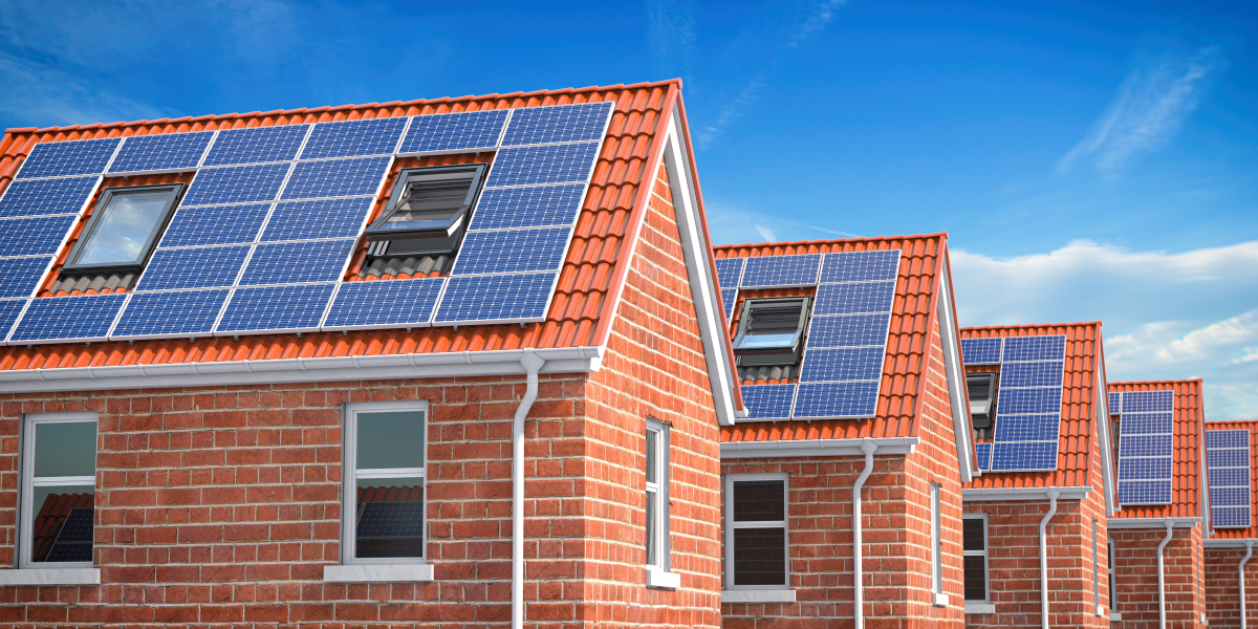Incorporating renewable energy into custom-built homes is an environmentally friendly and cost-effective way to reduce energy consumption. By leveraging solar, wind, or geothermal energy, homeowners can create sustainable living spaces that lower their carbon footprint and reduce utility costs. Here’s how to effectively integrate renewable energy into your custom home design. Incorporating renewable energy into custom built homes. Get help and advice here from industry experts for your home. Get a consultation.
Solar Energy Systems
Solar Panels
Solar panels are one of the most popular renewable energy solutions for custom-built homes. By installing photovoltaic (PV) panels on your roof, you can harness the sun’s energy to generate electricity. Solar energy systems can reduce or even eliminate reliance on the grid, providing a clean and renewable source of power.
When designing your home, ensure the roof is optimized for solar panels. The orientation and angle of the roof should maximize exposure to sunlight. Additionally, consider the installation of battery storage systems, which allow you to store excess energy generated during sunny periods for use at night or on cloudy days.
Solar Water Heating
Beyond electricity, solar energy can be used to heat water. Solar water heating systems capture the sun’s energy to provide hot water for your home. These systems can reduce the need for gas or electric water heaters, further cutting down on energy costs. Solar water heaters are particularly effective in homes with high water usage, such as those with multiple bathrooms or large families.
Wind Power
Small Wind Turbines
If your custom home is located in a windy area, installing small wind turbines can be a great way to generate renewable energy. Wind turbines convert the kinetic energy from the wind into electricity, which can power your home or be stored for later use. While wind power may not be suitable for every location, it can be an effective solution for homes situated in rural or coastal areas with consistent wind patterns.
When considering wind power, check local zoning regulations and wind resource maps to determine if your location is suitable for small wind turbines. A well-placed turbine can generate significant energy savings, reducing dependence on non-renewable energy sources.
Geothermal Energy
Geothermal Heat Pumps
Geothermal energy takes advantage of the stable temperatures found underground to heat and cool your home. Geothermal heat pumps (GHPs) are an efficient and sustainable way to maintain a comfortable indoor environment. These systems use the earth’s natural heat during winter to warm your home and extract heat from inside your home during summer to provide cooling.
Geothermal systems require the installation of underground pipes, making them ideal for new construction or custom-built homes where the system can be incorporated from the beginning. Though geothermal systems have a higher upfront cost, they offer long-term savings on heating and cooling expenses.
Energy-Efficient Design Integration
Passive Solar Design
Incorporating renewable energy into your home begins with energy-efficient design. Passive solar design is a strategy that maximizes natural light and heat to reduce energy consumption. This involves orienting your home to capture sunlight, installing energy-efficient windows, and using materials that retain heat in winter while keeping the home cool in summer.
Smart Energy Management
To maximize the efficiency of your renewable energy systems, consider integrating smart home technology that monitors and manages energy usage. Smart thermostats, lighting systems, and appliances can optimize energy consumption and reduce waste. These systems provide real-time data, allowing homeowners to adjust energy usage based on need.
Financial and Environmental Benefits
Reducing Energy Costs
Incorporating renewable energy solutions into your custom-built home can lead to substantial savings on energy bills. While the initial investment in solar panels, wind turbines, or geothermal systems may be higher, these systems pay for themselves over time through reduced utility costs. Furthermore, many states and municipalities offer tax credits, rebates, or incentives for homeowners who install renewable energy systems.
Lowering Carbon Footprint
By integrating renewable energy sources into your home, you significantly reduce your environmental impact. Solar, wind, and geothermal energy produce zero emissions, helping to lower your carbon footprint. These systems contribute to a more sustainable lifestyle by reducing reliance on fossil fuels and decreasing greenhouse gas emissions.
Conclusion
Incorporating renewable energy into custom-built homes is an excellent way to create a sustainable, energy-efficient living environment. By integrating solar panels, wind turbines, or geothermal systems into your design, you can lower utility costs, reduce your environmental impact, and increase your home’s overall value. Thoughtful planning and design, coupled with energy-efficient technology, will ensure that your custom-built home is both eco-friendly and cost-effective for years to come. Incorporating renewable energy into custom built homes. Get help and advice here from industry experts for your home. Get a consultation.


